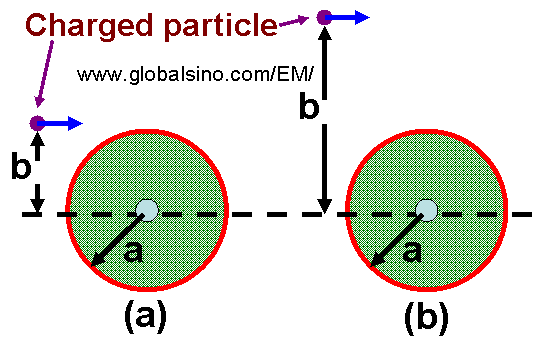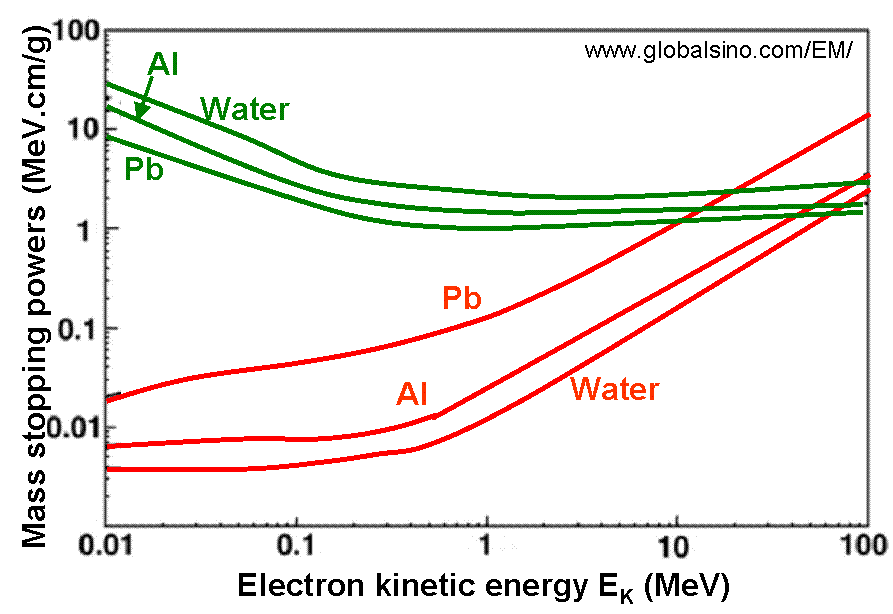=================================================================================
Collision stopping power (Scol) is the rate of energy loss resulting from the sum of the hard (b ≈ a) and soft (b >> a) collisions (see Figure 4432a), which is conventionally referred to as “collision interactions”, producing ionization and excitation contributing to the dose near the track. This type of stopping power results from Coulomb interactions of the charged particle with orbital electrons of the absorber. Different from radiative stopping power, both heavy
and light charged particles experience these interactions that result in energy
transfer from the charged particle to orbital electrons, i.e., excitation
and ionization of absorber atoms.
The classical derivation of the mass collision stopping power Scol,ρ of a heavy charged particle, such as a proton and a ion, is based on the calculation of the momentum change Δp of the heavy charged particle colliding with an orbital electron. Figure 4432b shows mass collision stopping power for electrons in water (H2O), aluminum (Al) and lead (Pb) against the electron kinetic energy, comparing with the mass radiative stopping power.

Figure 4432a. Hard (a) and soft (b) collisions. b is the impact parameter and a is the atomic radius.

Figure 4432b. Mass radiative and collision stopping powers for electrons in water (H2O), aluminum (Al)
and lead (Pb)
shown with red and green curves, respectively, against the electron kinetic energy. Adapted from NIST.
|

